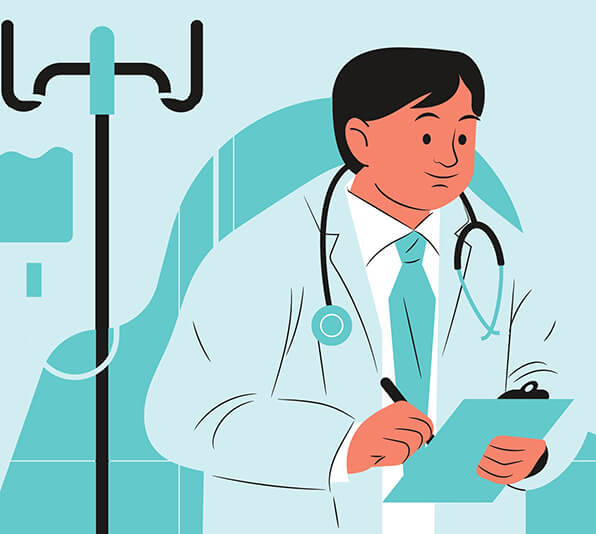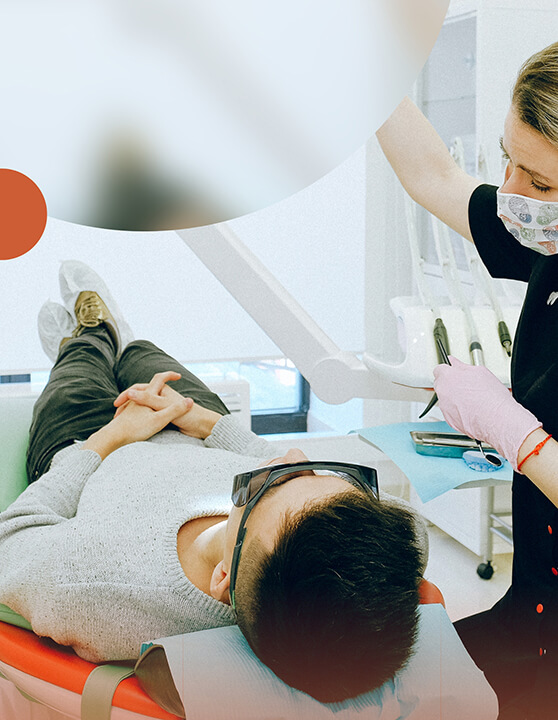How Is Angina Diagnosed
Angina, a common symptom of coronary artery disease, can be a worrisome experience. But fear not, because diagnosing angina is a straightforward process that allows healthcare professionals to provide you with the right treatment. By taking a comprehensive medical history, performing a physical examination, and conducting certain tests, your doctor can determine whether your symptoms are indeed angina. So, let’s explore the diagnostic procedures in more detail and discover how angina is diagnosed.
Physical Examination
During a physical examination to diagnose angina, your doctor will start by gathering your patient’s history. This includes asking you about your symptoms, medical history, and any risk factors you may have for heart disease. It’s important to provide detailed information to help your doctor make an accurate diagnosis and develop an appropriate treatment plan.
After the patient’s history, your doctor will move on to conducting a review of symptoms. They will ask you specifically about any chest pain or discomfort you have been experiencing, as well as any other symptoms such as shortness of breath, fatigue, or dizziness. This step helps your doctor assess the severity and frequency of your symptoms.
The final step in the physical examination is the assessment of physical signs. Your doctor will listen to your heart and lungs using a stethoscope to check for any abnormal sounds or rhythms. They may also feel your pulse to assess its regularity and strength. These physical signs provide valuable clues about the health of your cardiovascular system and can help in the diagnosis of angina.
(Angina Diagnosed)
Gathering History:
- Your doctor will ask about your past and current health.
- They want to know about any symptoms, your medical history, and things that might make heart problems more likely.
Review of Symptoms:
- Next, your doctor will ask about how you feel.
- They’ll focus on any chest pain, and also ask about other things like feeling out of breath, tired, or dizzy.
- This helps them understand how bad and how often you’re having these symptoms.
Physical Signs Assessment:
- Finally, the doctor will listen to your heart and lungs using a stethoscope.
- They want to catch any strange sounds or rhythms.
- They’ll also check your pulse by feeling it to see if it’s steady and strong.
- These physical checks give important clues about the health of your heart and can confirm if you might have angina.
(Angina Diagnosed)
Electrocardiogram (ECG)
One of the most commonly used tests to diagnose angina is the electrocardiogram (ECG). This non-invasive procedure measures the electrical activity of your heart and can detect any irregularities or abnormalities that may be indicative of angina or other heart conditions. (Angina Diagnosed)
A resting ECG is typically the starting point. You will be asked to lie down while electrodes are placed on your chest, arms, and legs. These electrodes are connected to a machine that records the electrical signals produced by your heart. The results are displayed as waves and patterns on a graph, which your doctor will interpret to assess the health of your heart.
In some cases, your doctor may recommend an exercise stress test (EST) in addition to the resting ECG. During this test, you will be asked to perform physical exercise, such as walking on a treadmill or riding a stationary bike, while undergoing continuous ECG monitoring. This helps to evaluate your heart’s response to exertion and can reveal any abnormalities or symptoms that may not be present at rest. (Angina Diagnosed)
Ambulatory ECG monitoring, which is also known as Holter monitoring, may be recommended if your symptoms are intermittent. In this test, you wear a portable ECG device that continuously records your heart’s electrical activity over a 24 to 48-hour period. This allows your doctor to assess any changes in your heart’s rhythm during your everyday activities, providing important diagnostic information. (Angina Diagnosed)
Resting ECG:
- The starting point is a resting ECG. You lie down, and small pads with wires (electrodes) are placed on your chest, arms, and legs.
- These electrodes are connected to a machine that records the electrical signals produced by your heart.
- The results show up as waves and patterns on a graph, helping your doctor understand the electrical activity of your heart.
Exercise Stress Test (EST):
- In some cases, your doctor might suggest an exercise stress test. Here, you’ll do physical activities like walking on a treadmill or using a stationary bike while your heart activity is continuously monitored by ECG.
- This helps evaluate how your heart responds to exercise and can reveal any issues that may not be noticeable at rest.
Ambulatory ECG Monitoring (Holter Monitoring):
- If your symptoms come and go, your doctor might recommend ambulatory ECG monitoring (Holter monitoring).
- You wear a portable ECG device for 24 to 48 hours, and it continuously records your heart’s electrical activity during your normal daily routine.
- This provides valuable information about any changes in your heart’s rhythm over an extended period, helping with diagnosis.
(Angina Diagnosed)

Echocardiogram
An echocardiogram is a non-invasive imaging test that uses sound waves to create detailed images of your heart’s structure and function. This test can be very helpful in diagnosing angina, as it provides valuable information about the size, shape, and movement of your heart and its various chambers. (Angina Diagnosed)
Transthoracic echocardiography is the most commonly used type of echocardiogram. It involves placing a small probe called a transducer on your chest and moving it around to obtain different views of your heart. The transducer emits sound waves that bounce off your heart and create images on a monitor. Your doctor will analyze these images to assess the blood flow, valve function, and overall health of your heart. (Angina Diagnosed)
In some cases, a stress echocardiogram may be recommended to further evaluate your heart’s function. Similar to the exercise stress test, you will be asked to exercise while undergoing echocardiography. This allows your doctor to assess how your heart responds to physical exertion and can provide additional information about any potential blockages in your coronary arteries.
(Angina Diagnosed)
What is it?
- An echocardiogram is a test that takes detailed pictures of your heart using sound waves.
- It’s non-invasive, meaning no needles or surgery are involved.
How is it done?
- The most common type is called transthoracic echocardiography.
- A small device, called a transducer, is placed on your chest. It sends out sound waves that bounce off your heart and create pictures on a screen.
- Your doctor looks at these images to understand the size, shape, and movement of your heart, as well as how blood is flowing and if your heart valves are working properly.
Stress Echocardiogram:
- Sometimes, a stress echocardiogram is suggested.
- Similar to an exercise stress test, you’ll be asked to do some physical activity while undergoing the echocardiogram.
- This helps your doctor see how your heart performs under stress and provides more insights, especially regarding potential blockages in your arteries.
(Angina Diagnosed)
Angina Diagnosed
Cardiac Catheterization
Cardiac catheterization is a more invasive procedure that allows your doctor to directly visualize your coronary arteries and assess any blockages or abnormalities. It is often performed if other tests have not provided a conclusive diagnosis or if your doctor suspects severe coronary artery disease. (Angina Diagnosed)
Coronary angiography is the main component of cardiac catheterization. It involves inserting a thin, flexible tube called a catheter into a blood vessel, usually in your groin or wrist. The catheter is then guided to your heart while a contrast dye is injected, which helps highlight your coronary arteries on X-ray images. This procedure allows your doctor to accurately determine the location and severity of any blockages. (Angina Diagnosed)
Fractional flow reserve (FFR) measurement is sometimes performed during cardiac catheterization to assess the functional significance of coronary artery stenosis. It involves passing a specialized wire through the catheter and into the narrowed segment of the artery. By measuring the pressure before and after the blockage, your doctor can determine if it is causing a significant reduction in blood flow and requires intervention. (Angina Diagnosed)
Intravascular ultrasound (IVUS) is another technique that can be used during cardiac catheterization. It involves threading a miniature ultrasound probe through the catheter and into your coronary arteries. This allows your doctor to obtain highly detailed images of the inside of your arteries, helping to assess the extent and composition of any plaques or blockages.
(Angina Diagnosed)
What is it?
- Cardiac catheterization is a more involved procedure that helps doctors see inside your coronary arteries.
- It’s done when other tests can’t give a clear diagnosis or if there’s a suspicion of severe coronary artery disease.
Coronary Angiography:
- The main part of this procedure is called coronary angiography.
- A thin tube, called a catheter, is inserted into a blood vessel, usually in your groin or wrist.
- The catheter is guided to your heart, and a special dye is injected. This dye makes your coronary arteries visible on X-ray images.
- This helps your doctor accurately locate and assess any blockages in your arteries.
Fractional Flow Reserve (FFR) Measurement:
- Sometimes, during cardiac catheterization, doctors measure FFR.
- This involves using a specialized wire to check the pressure before and after a blockage in an artery.
- It helps determine if the blockage significantly reduces blood flow and if any intervention is needed.
Intravascular Ultrasound (IVUS):
- Another technique used in cardiac catheterization is Intravascular Ultrasound (IVUS).
- A tiny ultrasound probe is threaded through the catheter into your coronary arteries.
- This provides detailed images of the inside of your arteries, helping your doctor see the extent and composition of any plaques or blockages.
(Angina Diagnosed)
In summary, cardiac catheterization is a procedure where a catheter is used to look inside your coronary arteries. Coronary angiography with contrast dye helps locate blockages, FFR measures the impact of blockages on blood flow, and IVUS provides detailed images of artery interiors. It’s done when a clearer understanding of coronary artery conditions is needed.
(Angina Diagnosed)

Blood Tests
Blood tests are an important component of the diagnostic process for angina, as they can provide information about your overall health, risk factors for heart disease, and any potential damage to your heart. (Angina Diagnosed)
A complete blood count (CBC) is a common blood test that provides information about your red and white blood cell counts, as well as your hemoglobin and platelet levels. Abnormalities in these values may indicate anemia or other conditions that can contribute to angina symptoms. (Angina Diagnosed)
A lipid profile is another essential blood test for diagnosing angina. It measures the levels of various types of lipids, such as cholesterol and triglycerides, in your blood. Elevated cholesterol and triglyceride levels are risk factors for the development of atherosclerosis, which can lead to angina and other cardiovascular diseases. (Angina Diagnosed)
Cardiac biomarkers, such as troponin, are specific proteins released into the bloodstream when there is damage to the heart muscle. Elevated levels of these biomarkers can indicate a heart attack or other forms of heart damage. Blood tests for cardiac biomarkers are typically performed if your doctor suspects that your symptoms may be related to a more severe cardiac event.
(Angina Diagnosed)
Cardiac Imaging
Cardiac imaging techniques provide detailed information about the structure and function of your heart, allowing your doctor to diagnose and evaluate angina effectively. (Angina Diagnosed)
Nuclear imaging involves the injection or ingestion of a small amount of radioactive material, which is then taken up by the heart muscle. Special cameras detect the radioactive emissions, producing images that highlight areas of reduced blood flow or damage to the heart. This test can help identify areas of the heart that are not receiving enough blood and oxygen, indicating the presence of coronary artery disease.
Cardiac magnetic resonance imaging (MRI) uses a powerful magnetic field and radio waves to create highly detailed images of your heart. This imaging technique can assess heart function, detect potential structural abnormalities, and evaluate the presence and extent of myocardial ischemia (reduced blood flow to the heart muscle). Cardiac MRI is particularly useful in diagnosing angina caused by conditions other than coronary artery disease, such as cardiomyopathy or valvular heart disease.
CT angiography is a non-invasive imaging test that uses computed tomography (CT) scanning to visualize your coronary arteries. It provides detailed images of the blood vessels, allowing your doctor to assess the presence of blockages or narrowing. CT angiography is especially useful when there is a suspicion of significant coronary artery disease but a patient is unable to undergo invasive procedures. (Angina Diagnosed)
(Angina Diagnosed)
Coronary Calcium Scoring
Coronary calcium scoring is a specialized imaging test that uses a CT scanner to measure the amount of calcium buildup in the walls of your coronary arteries. This buildup, known as coronary artery calcification, is strongly associated with atherosclerosis and can be an early sign of coronary artery disease. (Angina Diagnosed)
The procedure involves a quick, non-invasive scan of your upper body, which calculates a calcium score based on the amount and density of the calcium deposits detected. This score provides an estimate of your risk for coronary artery disease, allowing your doctor to develop an appropriate treatment plan to minimize your risk of angina and other heart-related complications.
(Angina Diagnosed)
Stress Tests
Stress tests are commonly used to evaluate how your heart functions under different levels of physical exertion or stress. These tests can help diagnose angina by observing changes in your heart’s electrical activity, blood flow, or function during exercise or simulated stress. (Angina Diagnosed)
The exercise stress test (EST) is the most straightforward and involves walking on a treadmill or riding a stationary bike while your heart rate, blood pressure, and ECG are monitored. This test allows your doctor to assess the effects of exercise on your heart and can reveal any abnormalities that may indicate angina or other cardiac conditions. (Angina Diagnosed)
In a nuclear stress test, a small amount of radioactive material is injected into your bloodstream either during exercise or at rest. Special cameras detect the radioactive emissions, providing images that show the blood flow to your heart during different stages of activity. This test can help pinpoint areas of reduced blood flow, indicating potential coronary artery disease or angina.
For individuals who are unable to exercise sufficiently, a pharmacological stress test may be performed. In this test, medications are administered to mimic the effect of exercise on your heart. The stress response is then evaluated using ECG monitoring, echocardiography, or nuclear imaging techniques. Pharmacological stress tests are especially useful for patients with physical limitations or cardiovascular conditions that prevent them from undergoing traditional exercise stress tests.
(Angina Diagnosed)
Computed Tomography (CT) Angiography
Computed tomography (CT) angiography is a non-invasive imaging test that uses a CT scanner to visualize your coronary arteries and evaluate the presence of blockages or narrowing. This test is particularly beneficial when there is a suspicion of significant coronary artery disease but a patient is unable to undergo invasive procedures. (Angina Diagnosed)
During the procedure, a contrast dye is injected into a vein, and a series of X-ray images are taken as the dye flows through your coronary arteries. These images are then reconstructed to create a comprehensive view of the blood vessels, allowing your doctor to assess the presence and severity of any blockages or other abnormalities. (Angina Diagnosed)
CT angiography carries fewer risks than invasive angiography and can provide valuable diagnostic information. However, it is important to note that it does involve exposure to ionizing radiation and should only be performed when clinically indicated.
(Angina Diagnosed)

Coronary Angiography
Coronary angiography is an invasive procedure that allows your doctor to directly visualize your coronary arteries and assess the presence of blockages or other abnormalities. It is considered the gold standard for diagnosing coronary artery disease and angina. (Angina Diagnosed)
During the procedure, a thin, flexible tube called a catheter is inserted into a blood vessel, typically in your groin or wrist. The catheter is then threaded to your heart under X-ray guidance, and a contrast dye is injected to help highlight your coronary arteries. X-ray images are taken as the dye flows through your arteries, providing detailed information about any blockages or other issues. (Angina Diagnosed)
Coronary angiography not only helps diagnose angina but also allows for immediate treatment if significant blockages are found. In some cases, interventional procedures such as angioplasty or stenting may be performed during the same procedure to restore blood flow to the heart. (Angina Diagnosed)
Overall, the diagnosis of angina involves a comprehensive evaluation using a variety of tests and procedures. By combining information from the patient history, physical examination, and various diagnostic tests, your doctor can accurately diagnose your condition and develop an appropriate treatment plan to manage angina and improve your heart health. Remember, early diagnosis and treatment play a crucial role in effectively managing angina and reducing the risk of heart-related complications.
(Angina Diagnosed)